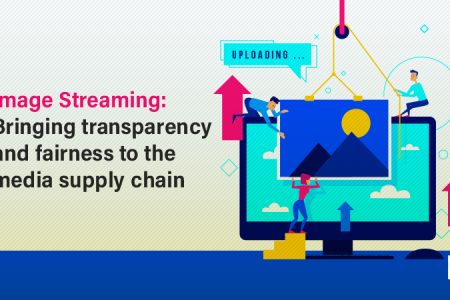The advertising ecosystem has long been criticized for its lack of transparency and fair compensation – although recent research from The Incorporated Society of British Advertisers (ISBA) and PriceWaterhouseCoopers (PwC), with participants such as Bauer, Future, The Trade Desk, Google Ad Manager, Havas and GroupM, indicates some progress has been made, with attribution rates vastly improving since 2020.
However, when the Association of National Advertisers (ANA) led its ad tech transparency study, conflicting methodologies and ‘vested interests’ are said to have complicated proceedings, considerably setting back the publication of results.
The study found that the estimated ‘ad tech tax’ could be anywhere between 35%-to-60% of U.S. marketers’ spend. But this opacity harms the entire ecosystem in more ways than one, as the steadily rising cost of digital ad fraud shows. In 2022, the total cost of ad fraud worldwide was estimated at $81 billion – up from $52 billion two years before. This year, it’s predicted to breach $100 billion.
Popular ad fraud techniques such as domain spoofing, geo masking, and click injection are still costing brands, financially and reputationally. As much as $2.6 billion spent by brands inadvertently funds misinformative news sites per year, circulating fake news around key topics such as democracy, elections, and climate.
Adapting past solutions to the present
While challenges around transparency have evolved with the internet, they are not inherently new. Music piracy and illegitimate websites once ran rampant until legal streaming made music more accessible – and more traceable.
Image streaming works similarly to music or video streaming. Instead of having multiple files of the same image (typically a JPEG or PNG format) uploaded onto every website individually, an image is stored on a secure and password-protected central server. This provides a specific embed code that can be pasted into the webpage editor or content management system (CMS), such as WordPress or Squarespace. On the webpage, the image is displayed as any standard image would be, but with enhanced security controls and an improved end-user experience.
Also Read: Immersive Experiences are Key to Consumer Engagement in Sports and Entertainment
More insight, more control
While the streamed image may look identical to a normal image at first glance, there’s much more to it. Metadata attached to the image cannot be removed or tampered with, which means that critical details and data – such as the image creator, owner, content, or circumstances (when and where it was taken), as well as any supplementary captions – stay with it wherever it goes.
Whoever hosts the original also maintains oversight of where the image is streamed through a list of URLs and domains, and can block, deactivate, or remove any and all images from view, quickly and easily.
This level of control prevents the image from being copied, downloaded, and shared without consent. It has been reported that more than 2.5 billion images are stolen daily – a culture of sharing that not only renders image monetization very difficult, but also facilitates the spread of fake news. With drag-and-drop, screenshot, and right-click functions all disabled, streaming an image protects intellectual property and prevents the widespread circulation of tampered images.
Who benefits?
A more traceable image ecosystem improves transparency within the overall media and advertising environment, while simultaneously creating monetization opportunities throughout the supply chain.
Image owners – whether the original photographer, graphic artist, or image publisher – have full control over an image and do not risk losing revenue through unlawful redistribution. A safe sharing option encourages reach in a way that allows owners to keep track of their work, and guarantees copyright and accreditation.
Image-streaming technology enables in-image advertising, a new kind of advertising that promises additional streams of revenue to image owners on one hand, and high-quality contextual coverage and high-visibility placement to advertisers on the other.
Here’s how it works: image-streaming technology allows for an ad to be momentarily superimposed over a picture featured in an article or webpage. The detailed metadata of these images, paired with artificial intelligence technology, ensures ads are placed in contextually relevant environments. An image of a music show, for example, could advertise an event space or ticket seller for a similar show.
End-users also benefit in several ways. Streamed images offer more interactive controls to end-users, who can view images in full screen or with Hyper Zoom technology. At the same time, image owners can keep track of engagements through previously unavailable image analytics. Since heavy files are not uploaded to the actual webpage, the technology also keeps sites light – without impacting image quality – reducing buffering times. More precise contextual advertising also increases the likelihood of ads being relevant, without infringing on individual user privacy.
The future of advertising
Digital advertising works – but it could work a lot better. We do not need to reinvent the wheel to improve our ecosystem, but we do need new and different ways to accurately measure and monitor media content, and to make transparency, fairness, and equality the norm within the ad tech and media supply chain.
Beyond wasted ad spend, plenty of time and resources are expended trying to crack down on copyright infringement. Revolutionary technologies like image streaming address these issues by disabling illegal content sharing in the first place.
Contextual in-image advertising, powered by AI and detailed metadata, also opens up additional revenue streams for image owners, publishers, and advertisers – ensuring brand safe and relevant ads are seen by the right people, which in return increases brand trust among its consumers.

